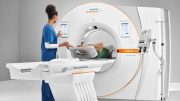When it comes to medical device QMS (quality management system), creating a great product is about more than appearance or durability. Pacemakers, contraceptives, wheelchairs and other medical innovations have the potential to improve lives vastly, but can also cause undue harm if they aren’t appropriately vetted.
That’s why intense regulations govern the medical device industry — one cannot understate the importance of quality management systems. QMS software ensures compliance with the International Organization for Standardization (ISO) and U.S. Food and Drug Administration (FDA).
The Definition of a Medical Device
The FDA defines a medical device as anything intended to prevent, diagnose, treat or cure diseases or physically alter bodily function without using chemicals. Substances that use chemical action are classified as medicines instead.
Under this definition, everything from tongue depressors and glasses to implanted continuous glucose monitors counts as a device. It may be used externally or internally by a physician or the patient. Some medical devices — like needles — are simple objects designed for single use, while things like artificial hips are intended to last a lifetime.
Objects that improve a person’s appearance but do not cure a disease aren’t classified as medical devices. So prosthetic legs count as medical devices, but prosthetic eyes — which serve no biological function — do not.
QMS FDA Medical Device Standards
In the United States, the FDA regulates the sale of medical devices. Specifically, the FDA’s Center for Devices and Radiological Health (CDRH) approves or denies them.
Anyone who intends to sell such a device must first receive approval from the CDRH. While the device is on the market, the FDA’s MedWatch program monitors its safety and efficacy continually. If any problems with the technology arise, MedWatch steps in to remove it from the market.
ISO Standards for Medical Devices
In addition to getting FDA clearance, medical device manufacturers must go through the ISO. A total of 162 countries use the ISO certification. The 14971, 10993, 62304 and 13485 standards commonly govern medical device production, distribution, usage and disposal. Here is a summary of each one:
- ISO 14971: This 36-page document says manufacturers must apply a risk management process when creating a medical device. They must identify any possible hazards associated with its use.
- ISO 10993: This standard categorizes medical devices based on how they interact with the body. It also outlines biological safety practices and the potential consequences customers and manufacturers will face if the device breaks.
- ISO 62304: This regulation outlines medical device software life cycles.
- ISO 13485: This document specifies medical device QMS requirements. It explains companies must prove their ability to meet customer and regulatory standards.
Reading ISO 13485 is critical to understanding the importance of quality management systems.
The Role of QMS in Health Care
Quality management system software designed for the health care field ensures FDA and ISO compliance. It also helps manage risk across disparate systems, improves safety and quality processes, allows for better data visibility and creates more seamless workflows. There are several ways quality management systems accomplish this.
1. Addressing Medical Device Life Cycles
All medical devices go through the following stages in their development:
- Concept or discovery
- Design and prototype
- Regulatory approval, sales and clinician training
- Review and product deployment
- Safety monitoring and post-market surveillance, clinical follow-up, improvements and potential relaunch
QMS software guides the entire process.
2. Improving Product Quality and Safety
Safety is of the utmost importance in health care and other life science industries. That’s why the ISO 13485 document provides detailed guidelines on meeting safety requirements by using specially designed QMS software and the ISO 14971 heavily emphasizes risk management.
3. Reducing Costs
Because quality management systems improve efficiency in the medical device life cycle from start to finish, they can save manufacturers money.
4. Standardizing Documentation and Processes
Medical device QMS software allows for the straightforward documentation and recording of procedures. This enables manufacturers to standardize the medical device development process.
5. Increasing Operational Efficiency
Quality management system software helps shorten the medical device life cycle. It measures supply chain metrics and provides insights with reports. Across supply chains, it allows visibility with a robust supplier assessment process. It also vastly improves cybersecurity and can track risks using a data-first approach.
The software can detect product defects before a medical device hits the market, saving manufacturers time and money. It also ensures compliance with FDA, ISO and environmental regulations in different locations. All these factors add up to create a much more efficient process.
The Importance of Quality Management Systems in Health Care Risk Management
When trying to produce or sell a medical device, the key to meeting FDA and ISO standards is to use quality management system software. Large and small companies use QMS software to guide the research, development, testing and launch of their medical devices. By doing so, they improve and save countless lives.
By Shannon Flynn, ReHack





